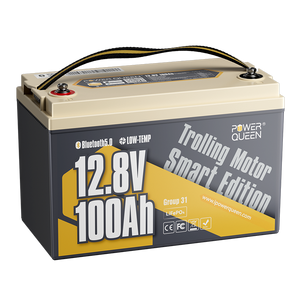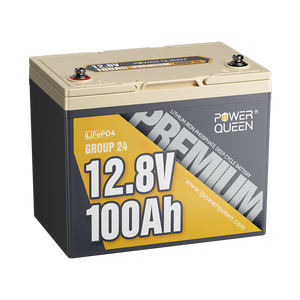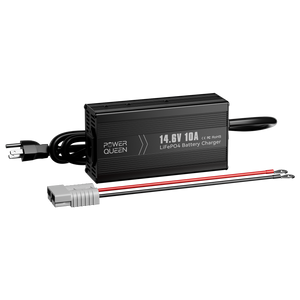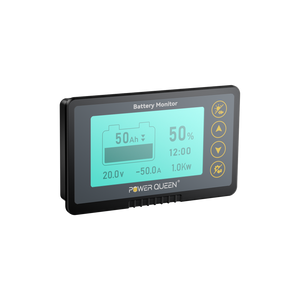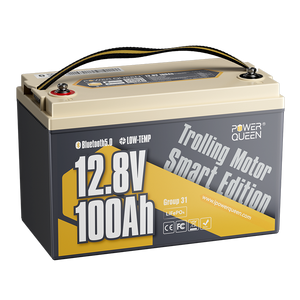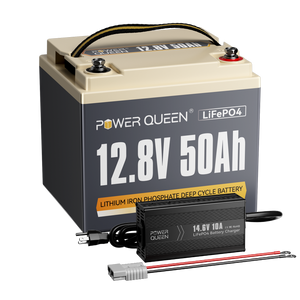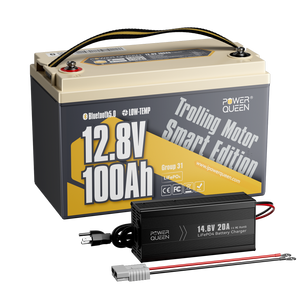Difference Between MPPT Inverter vs. Charge Controller
As renewable energy systems—especially solar power—become more prevalent, choosing the appropriate parts is essential for maximum effectiveness. The MPPT inverter and charge controller are two crucial parts of solar systems that are often overlooked. Although both aid in the management of energy flow, their functions are distinct. This post will help you choose the best solar power system by contrasting an MPPT inverter with a charge controller.
Table of Content
- Part 1. What is an MPPT Inverter?
- Part 2. What is a Charge Controller?
- Part 3. Key Differences Between MPPT Inverter and Charge Controller
- Part 4. Conclusion: MPPT Inverter vs. Charge Controller – Which One Do You Need?
- Part 5. Better Option: Utilizing Solar Inverter Charger for Less Wiring
Part 1. What is an MPPT Inverter?
An MPPT inverter is a specialized device used in residential energy systems to maximize the energy output from photovoltaic (PV) panels. It combines an inverter and solar charge controller into one unit. Its main job is to continuously modify the panels' electrical working point so that, in the face of varying circumstances, maximum power generation is guaranteed. The MPPT inverter increases the solar system's efficiency and turns more solar energy into useful electricity for residences and businesses by tracking the maximum power point.
1.1 Key Features of MPPT Inverters:
- MPPT Technology: Maximizes the amount of energy produced by solar panels by setting the voltage and current to their ideal values.
- Inverter Functionality: Converts DC electricity to AC, making the power usable for homes, businesses, or feeding back into the grid.
- Grid-Tied or Off-Grid: While some MPPT inverters are intended for off-grid configurations with energy storage possibilities, others are made for grid-tied systems.
- High Efficiency: Especially under fluctuating solar conditions, these inverters outperform conventional inverters in terms of efficiency.
Part 2. What is a Charge Controller?
The regulation of the electricity flow from solar panels to a battery storage system by a charge controller prevents batteries from being overloaded or severely depleted. Charge controllers, which are available in two primary varieties: PWM (Pulse Width Modulation) and MPPT charge controllers, are essential for off-grid solar power systems with battery storage.
Related reading: MPPT VS. PWM Charge Controllers



2.1 Key Features of Charge Controllers:
- Battery Protection: Regulates the amount of current going into the battery to avoid overcharging and increase battery life.
- Types: Both PWM and MPPT versions are available, with MPPT controllers providing up to 30% more efficient solar panels.
- DC Power Management: Charge controllers manage the DC power from the panels and transfer it straight, without conversion to AC, to a battery system that runs on DC.
- Essential for Off-Grid Systems: Utilized in systems that store solar energy for future consumption.
Part 3. Key Differences Between MPPT Inverter and Charge Controller
Despite using MPPT technology, MPPT inverters and charge controllers have quite different functions in solar power systems. The main variations are as follows:
|
Criteria |
MPPT Inverter |
Charge Controller |
|
Primary Function |
Converts DC to AC and optimizes solar panel output |
Regulates power from solar panels to batteries |
|
Type of System |
Ideal for grid-tied or hybrid systems |
Essential for off-grid systems with battery storage |
|
Energy Conversion |
DC to AC for immediate use or grid feeding |
DC to DC for battery storage |
|
Role in Battery Systems |
Can charge batteries in hybrid setups but isn't dedicated to battery management |
Specifically designed to manage battery charging |
|
Cost |
Generally more expensive due to dual functionality |
Usually less expensive, especially PWM controllers |
|
Data Tracked |
Limited, manual readings |
SOC, voltage, temperature, cycles, and more in real-time |
|
User Experience |
More hands-on, less automation |
Convenient, fully automated tracking |
3.1 When to Use an MPPT Inverter?
Grid-tied systems that use solar electricity primarily for real-time consumption and feed any excess back into the grid are best suited for an MPPT inverter. In order to maximize energy efficiency from both solar and grid sources, it is also utilized in hybrid systems that integrate grid power with battery storage. An MPPT inverter is your best bet if you want to optimize the output of your solar panels and convert the energy for usage in your house or place of business.
3.2 When to Use a Charge Controller?
Off-grid solar systems that aim to store solar energy in batteries for future use require a charge controller. Due to their higher efficiency, MPPT charge controllers are preferred for larger systems with significant power requirements. A PWM charge controller could work well for systems that are more compact or economical.
Part 4. Conclusion: MPPT Inverter vs. Charge Controller – Which One Do You Need?
Depending on how your system is configured, you can choose between an MPPT inverter and a charge controller. An MPPT inverter is the best option if your solar system is hybrid or grid-tied and you need to convert energy for instant usage. On the other hand, a charge controller is necessary if you're in charge of an off-grid system and need to effectively store solar energy in batteries.
Whether in the charge controller or the inverter, MPPT technology is essential for optimal efficiency in the extraction of solar energy. Designing a solar power system that meets your energy needs will be made easier if you are aware of the distinct functions of each device.
Part 5. Better Option: Utilizing Solar Inverter Charger for Less Wiring
An ideal alternative for individuals looking for a solar power arrangement that is both streamlined and efficient may be a solar inverter charger. By combining the functions of a charge controller with an MPPT inverter, this device minimizes wiring complexity and eliminates the need for separate components.
For off-grid or hybrid systems, where energy conversion and storage must function flawlessly together, solar inverter chargers are made. Let's examine the reasons why, in many circumstances, using a solar inverter charger might be a superior choice.
5.1 What is a Solar Inverter Charger?
Three essential features are combined into one solar inverter charger:
- MPPT Charge Controller: Optimizes and prevents overcharging of your battery bank by controlling the amount of solar electricity that enters it.
- Inverter: Transforms DC power from solar panels or batteries into AC power that can be used for a home, boat, or recreational vehicle.
- Battery Charger: Provides power availability even on overcast days or at night by charging the battery bank using an AC source, such as the grid or a backup generator.

Power Queen 2000W Inverter 12V DC to 110V-120V AC Converter with 2 AC Outlets
By eliminating the need for separate parts like an inverter and charge controller, this all-in-one gadget makes solar system installs easier and results in a cleaner, more effective setup.
5.2 Key Benefits of a Solar Inverter Charger
Simplified Installation: There is a lot less wiring required because the inverter and charge controller are combined into one single unit. This lessens the difficulty of configuring your solar power system and lowers the possibility of installation mistakes, which may lead to system failure or inefficiency.
Cost-Efficient: Although solar inverter chargers may seem more costly at first than buying an inverter and charge controller separately, the savings on labor and wiring can offset the price difference. Furthermore, maintenance expenses may be decreased over time by streamlining the system design.
Space-Saving: Space can be an issue in off-grid living arrangements such as small dwellings, boats, or RVs. When compared to using several devices, solar inverter chargers occupy less space, which makes them perfect for small spaces where every inch counts.
Improved Energy Efficiency: Since the charge controller and inverter operate together flawlessly, energy management efficiency is frequently increased. Better overall performance is attained by less energy loss during transfer between distinct components.
Backup Power Solutions: An external AC source, like a generator or the grid, can be used to charge batteries with several solar inverter chargers. Being able to rely on backup power is crucial if you live off the grid or in a place where blackouts frequently occur.
When constructing an off-grid or hybrid solar system for a home, RV, or boat, a solar inverter charger is frequently the most economical and practical option. You may concentrate more on using the sun's energy and less on equipment maintenance if there is less wiring and component management.




